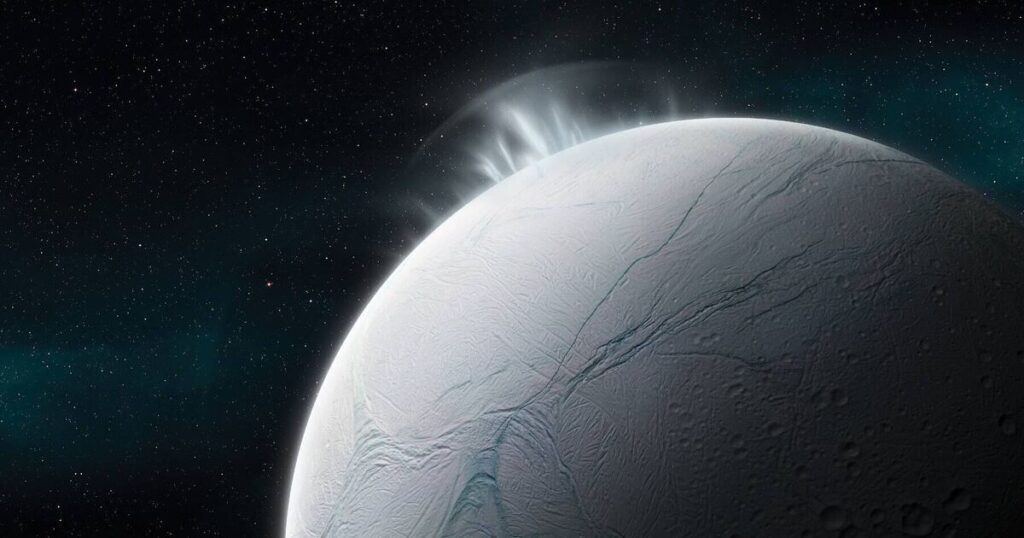Humanity is on the verge of potentially discovering extraterrestrial life after scientists found that one of Saturn’s moons, Enceladus, meets all the criteria to support life.
The European Space Agency is planning an urgent mission to search for aliens on Enceladus following this groundbreaking discovery.
This alert was triggered by scientists analyzing data collected by the Cassini spacecraft, which flew past the moon two decades ago. It comes after NASA claimed aliens might be listening in to our space signals – and gave an alarming warning.
A new analysis of tiny ice grains that the spacecraft encountered revealed organic molecules being emitted from the moon, located 740,000 miles from Earth.
Space agency experts say this is a ‘clear sign that complex chemical reactions are taking place within its underground ocean’, reports the Daily Star.
Water jets burst from cracks near the moon’s south pole, propelling ice grains into space.
These ice particles, smaller than grains of sand, either fall back onto the moon’s surface or escape to form a ring around Saturn that follows Enceladus’s orbit.
Lead scientist Nozair Khawaja stated, “Cassini was detecting samples from Enceladus all the time as it flew through Saturn’s E ring.”
Ice grains ejected from the moon just minutes before struck the spacecraft’s Cosmic Dust Analyzer instrument at a speed of 11 miles per second.
“The ice grains contain not just frozen water, but also other molecules, including organics,” said Nozair.
“At lower impact speeds the ice shatters and the signal from clusters of water molecules can hide the signal from certain organic molecules.
“But when the ice grains hit the Cosmic Dust Analyser fast water molecules don’t cluster and we have a chance to see these previously hidden signals.”
These molecules were formed within Enceladus’s ocean.
Scientists also discovered entirely new molecules that had never been seen before in ice grains from Enceladus – including oxygen-bearing compounds.
On Earth, these same compounds are involved in the ‘chains of chemical reactions that ultimately lead to the more complex molecules that are essential for life’.
Nozair stated, “There are many possible pathways from the organic molecules we found in the Cassini data to potentially biologically relevant compounds which enhances the likelihood that the moon is habitable.
“There is much more in the data that we are currently exploring so we are looking forward to finding out more in the near future.”
Plans for a future mission are already underway.
The goal is to fly through the jets and even land on the Saturn moon’s south polar terrain to collect samples and search for life.
A team of scientists and engineers is already considering the selection of modern scientific instruments that the spacecraft would carry.
A European Space Agency spokesman said, “Enceladus ticks all the boxes to be a habitable environment that could support life – the presence of liquid water, a source of energy, a specific set of chemical elements and complex organic molecules.
“A mission that takes measurements directly from the moon’s surface, seeking out signs of life, would offer Europe a front seat in Solar System science.”

